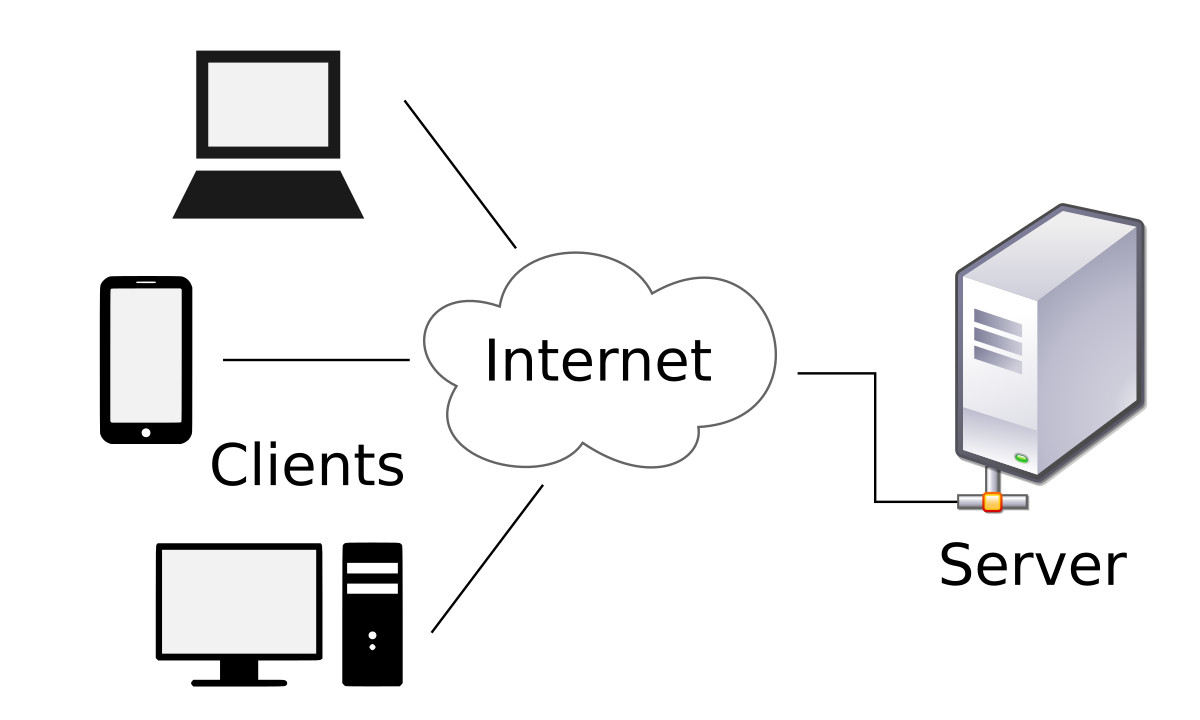Client and Server Network
Client and Server Network
 |
 |
ADVANTAGES OF COMPUTER NETWORK
DISADVANTAGES OF COMPUTER NETWORK
Client and server role
The client-server characteristic describes the relationship of cooperating programs in an application. The server component provides a function or service to one or many clients, which initiate requests for such services. Servers are classified by the services they provide. For example, a web server serves web pages and a file server serves computer files. A shared resource may be any of the server computer's software and electronic components, from programs and data to processors and storage devices. The sharing of resources of a server constitutes a service.
Whether a computer is a client, a server, or both, is determined by the nature of the application that requires the service functions. For example, a single computer can run web servers and file server software at the same time to serve different data to clients making different kinds of requests. The client software can also communicate with server software within the same computer. Communication between servers, such as to synchronize data, is sometimes called inter-server or server-to-server communication.
For Example:
When a bank customer accesses online banking services with a web browser (the client), the client initiates a request to the bank's web server. The customer's login credentials may be stored in a database, and the web server accesses the database server as a client. An application server interprets the returned data by applying the bank's business logic and provides the output to the web server. Finally, the webserver returns the result to the client web browser for display. In each step of this sequence of client-server message exchanges, a computer processes a request and returns data. This is the request-response messaging pattern. When all the requests are met, the sequence is complete, and the web browser presents the data to the customer.
Interesting Facts:
An early form of client-server architecture is remote job entry, dating at least to OS/360 (announced 1964), where the request was to run a job, and the response was the output. While formulating the client-server model in the 1960s and 1970s, computer scientists building ARPANET (at the Stanford Research Institute) used the terms server-host (or serving host) and user-host (or using-host), and these appear in the early documents RFC 5 and RFC 4. This usage was continued at Xerox PARC in the mid-1970s. One context in which researchers used these terms was in the design of a computer network programming language called Decode-Encode Language (DEL). The purpose of this language was to accept commands from one computer (the user-host), which would return status reports to the user as it encoded the commands in network packets. Another DEL-capable computer, the server-host, received the packets, decoded them, and returned formatted data to the user-host. A DEL program on the user-host received the results to present to the user. This is a client-server transaction. Development of DEL was just beginning in 1969, the year that the United States Department of Defense established ARPANET (predecessor of Internet).THANK YOU


Comments
Post a Comment